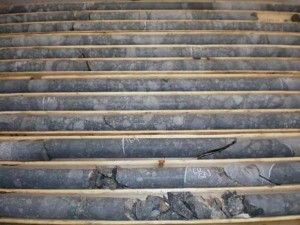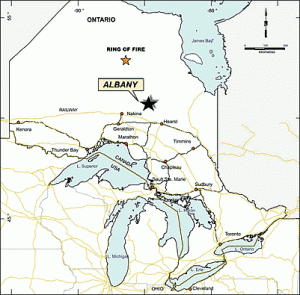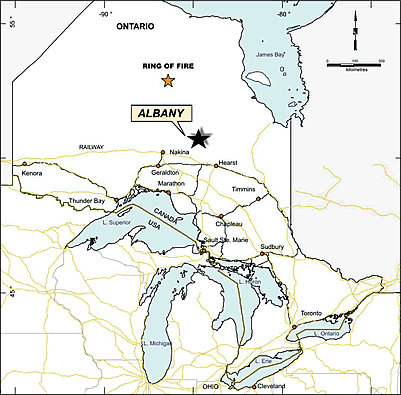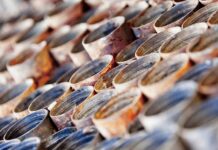 THUNDER BAY – Mining – Zenyatta Ventures Ltd. has announced significant results from a second series of beneficiation tests. Graphite has properties that make it highly desirable for industrial use, and commercialization. The tests on the graphite properties from the Zenyatta Ventures Albany Project were conducted at SGS Canada Inc. (“Lakefield”) on samples from company’s graphite deposit. Trials using two different leaching processes both yielded results exceeding the target of >99.0% Carbon (“C”).
THUNDER BAY – Mining – Zenyatta Ventures Ltd. has announced significant results from a second series of beneficiation tests. Graphite has properties that make it highly desirable for industrial use, and commercialization. The tests on the graphite properties from the Zenyatta Ventures Albany Project were conducted at SGS Canada Inc. (“Lakefield”) on samples from company’s graphite deposit. Trials using two different leaching processes both yielded results exceeding the target of >99.0% Carbon (“C”).
Graphite properties at 99.96% pure
One process yielded 99.7% C while another different and cheaper process yielded an exceptional purity of 99.96% C. This is further confirmation of earlier mineralogical studies that showed the Albany ‘vein- type’ graphite material to be of high quality and containing minor amounts of impurities.
Aubrey Eveleigh, President and CEO stated “Achieving these ultra-high purity carbon values at such an early stage from a simple and relatively inexpensive process is truly remarkable. This large ‘vein-type’ graphite deposit appears to be ‘one of a kind’ globally in both size and quality.”
The ability to produce a natural graphite product equivalent in purity to the highest grade synthetic graphite using low-cost conventional processing techniques will allow Zenyatta to target the growing market in high value-added graphite applications.
Eveleigh added “With accelerated global interest in the Albany graphite deposit, Zenyatta will continue to discuss the merits of the project with potential strategic partners, including graphite end-users.”
Physical properities of graphite

Natural graphite material has varying levels of quality depending on the type (vein, flake or amorphous). The degree of purity can vary greatly, which heavily influences the use of the material in applications and its pricing. Carbon purity of natural graphite can generally range from 70.0% all the way to 99.0%,
whereas synthetic graphite is usually greater than 99.0%. Given the ultra-high purity at Zenyatta’s Albany project, the Company will be positioning the material to compete in the $13 billion (1.5 million tonnes annually) synthetic market.
Synthetic graphite is significantly more expensive to make but commands the highest market prices due to its purity. It can cost $4000 – $5000 per tonne (99.5% purity) to produce but can be sold for $7000 – $9000 per tonne. Ultra-high purity (99.9%) graphite can demand a price of $20,000 – $30,000 per tonne.
Processing and purification of natural graphite has improved greatly in recent years and projects with initial high purity graphite, like the Albany vein-type, require less purification and therefore lower cost to produce.
Synthetic graphite producers are faced with escalating energy costs associated with turning petroleum coke into graphite. Petroleum coke is the solid waste remaining after refining oil. To turn petroleum coke into graphite requires extensive thermal treatment (up to 3000°C), in various steps, to burn off impurities and re-arrange graphite layers. Not only is this energy intensive but also an environmental issue. Another big concern for synthetic producers is the diminishing supply of petroleum (needle) coke derived from low sulfur, sweet crude oil.
Therefore, natural high purity graphite is gaining traction over synthetic graphite for many applications due to lower cost of production. Also, natural graphite has superior qualities such as higher specific capacity and less porosity.
Zenyatta Ventures – Rare ‘vein-type’ graphite deposit

Zenyatta is developing a very rare ‘vein-type’ graphite deposit it discovered in 2011 in northeastern Ontario, Canada. It is the largest and only known ‘vein type’ graphite deposit under development in the world. Previously announced drill intersections at the Albany project have been as high as 170 metres grading 6.6% C. Globally, the only graphite mines of this type are located in Sri Lanka, which have been in production since 1847. The current high grade, underground mining operations produce only 5,500 tonnes annually from narrow (5-10cm) veins. Despite the lack of volume, Sri Lankan ‘vein-type’ graphite has enjoyed great demand due to its unusually high purity and unique physical properties.
Graphite veins are quite rare and in many industrial applications offer superior performance due to higher thermal and electrical conductivity.
Zenyatta’s Albany graphite deposit is located 30km north of the Trans Canada Highway, power line and natural gas pipeline near the communities of Constance Lake First Nation and Hearst. A rail line is located 70km away and an all-weather road approximately 4-5km from the graphite deposit.
The deposit is near surface, underneath glacial till overburden and a thin veneer of Paleozoic sedimentary cover rocks.
Graphite Properties
Graphite is a natural form of carbon with the chemical formula C, which it shares with diamond and coal. The outlook for the global graphite market is very promising with demand growing rapidly from new applications. It is now considered one of the more strategic elements by many leading industrial nations, particularly for its growing importance in high technology manufacturing and in the emerging “green” industries such as electric vehicle components. The application for graphitic material is constantly evolving due to its unique chemical, electrical and thermal properties. It maintains its stability and strength under temperatures in excess of 3,500°C and is very resistant to chemical corrosion. It is also one of the lightest of all reinforcing elements and has high natural
lubricating abilities. Some of these key physical and chemical properties make it critical to modern industry.







